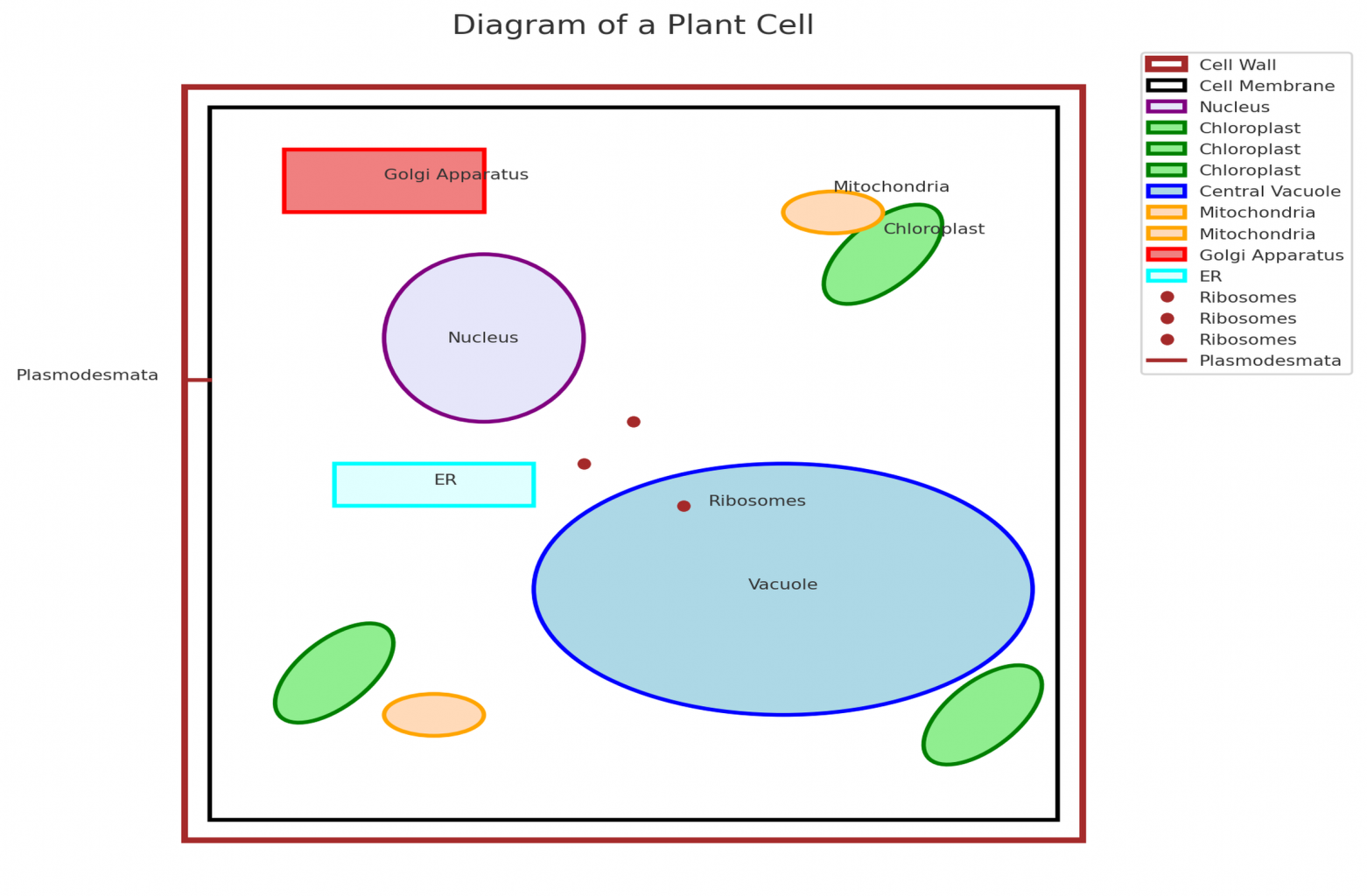Plant cells are the basic building blocks of plant life, playing a crucial role in the growth, development, and survival of plants. These cells are eukaryotic, meaning they have a defined nucleus and specialized organelles enclosed within membranes. What sets plant cells apart from animal cells are their unique structures, such as the cell wall, chloroplasts, and central vacuole, which enable them to perform vital functions like photosynthesis and structural support.

Key Components of a Plant Cell and Their Functions
1. Cell Wall
- Structure: A rigid outer layer made of cellulose, hemicellulose, and lignin.
- Function: Provides structural support, protection, and shape to the cell. The cell wall also regulates water absorption and allows communication between cells through plasmodesmata—tiny channels connecting adjacent cells.
2. Cell Membrane
- Structure: A semi-permeable lipid bilayer located just inside the cell wall.
- Function: Controls the movement of substances in and out of the cell, maintaining homeostasis.
3. Nucleus
- Structure: A membrane-bound organelle containing the cell’s genetic material (DNA).
- Function: Acts as the control center, regulating cell activities like growth, metabolism, and reproduction through gene expression.
4. Cytoplasm
- Structure: A gel-like substance that fills the cell and contains all organelles.
- Function: Facilitates the movement of materials and provides a medium for chemical reactions.
5. Chloroplasts
- Structure: Double-membraned organelles containing chlorophyll, a green pigment essential for photosynthesis.
- Function: Capture sunlight and convert it into chemical energy through photosynthesis, producing glucose and oxygen.
6. Mitochondria
- Structure: Double-membraned organelles often referred to as the “powerhouses” of the cell.
- Function: Generate energy in the form of ATP (adenosine triphosphate) through cellular respiration.
7. Central Vacuole
- Structure: A large, fluid-filled organelle occupying up to 90% of the cell’s volume in mature plant cells.
- Function: Stores nutrients, waste products, and water. It also maintains turgor pressure, which keeps the plant upright and rigid.
8. Endoplasmic Reticulum (ER)
- Structure: A network of membranes. It comes in two types: rough ER (with ribosomes) and smooth ER (without ribosomes).
- Function: Rough ER synthesizes proteins, while smooth ER is involved in lipid synthesis and detoxification.
9. Golgi Apparatus
- Structure: Stacked, membrane-bound sacs.
- Function: Modifies, packages, and distributes proteins and lipids for secretion or use within the cell.
10. Ribosomes
- Structure: Small, round structures made of RNA and protein.
- Function: Sites of protein synthesis, translating genetic information into functional proteins.
11. Peroxisomes
- Structure: Small, membrane-bound organelles.
- Function: Break down fatty acids and neutralize harmful byproducts like hydrogen peroxide.
12. Cytoskeleton
- Structure: A network of protein filaments and tubules.
- Function: Maintains cell shape, enables intracellular transport, and facilitates cell division.
13. Plasmodesmata
- Structure: Microscopic channels that traverse cell walls.
- Function: Allow the exchange of materials and communication between adjacent cells.
Special Features of Plant Cells
- Photosynthesis: Chloroplasts enable plants to produce their own food by converting sunlight into energy.
- Structural Support: The cell wall and central vacuole work together to provide rigidity, enabling plants to grow tall and withstand environmental stresses.
- Storage: The central vacuole serves as a reservoir for water, nutrients, and waste, playing a vital role in maintaining cellular homeostasis.
Conclusion
The structure of plant cells is intricately designed to support their functions in growth, energy production, and environmental interaction. By understanding plant cell anatomy, we gain insights into the fundamental processes that sustain plant life and, consequently, all life on Earth. This knowledge not only informs fields like agriculture, medicine, and environmental science but also deepens our appreciation for the complexity and resilience of the plant kingdom.




